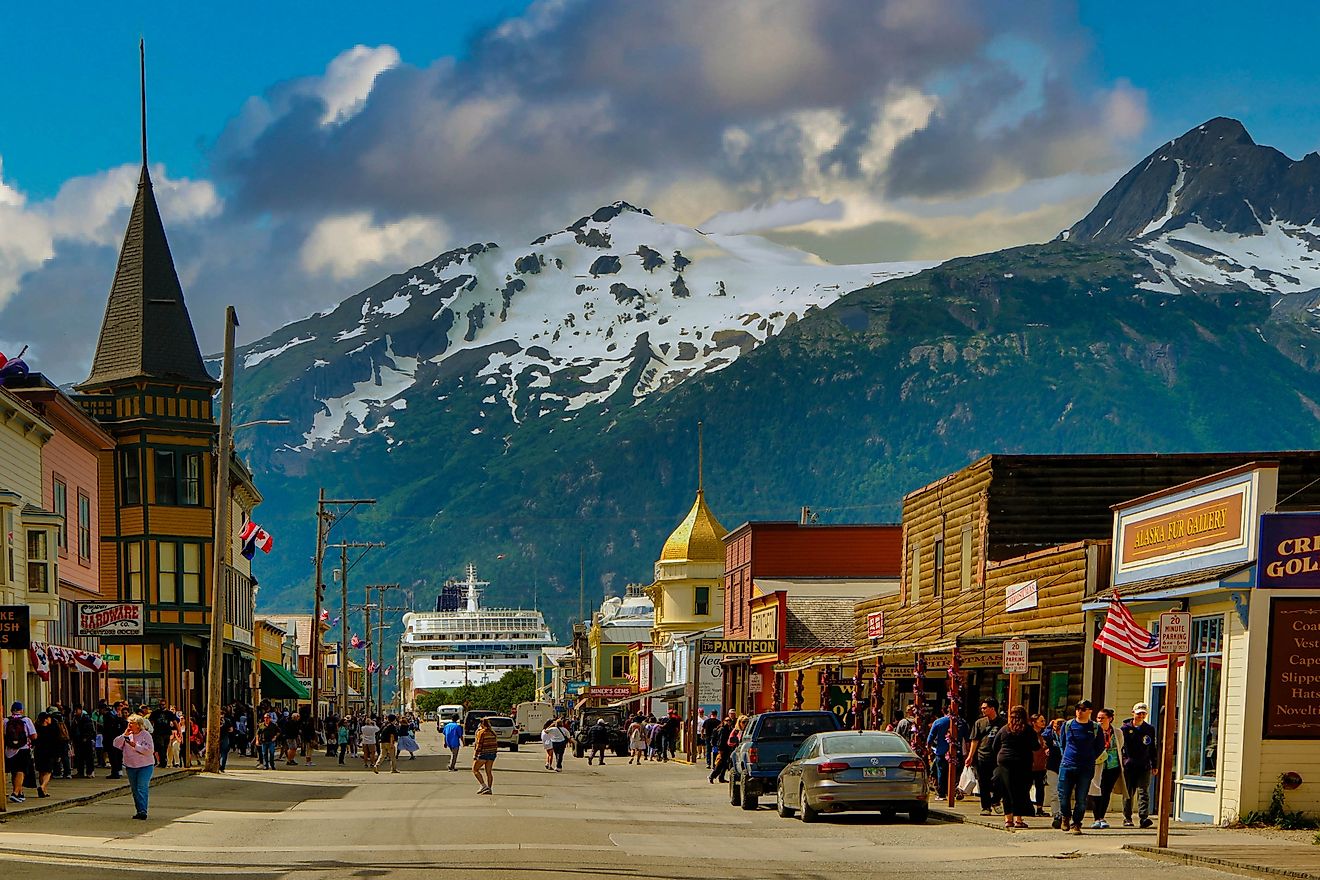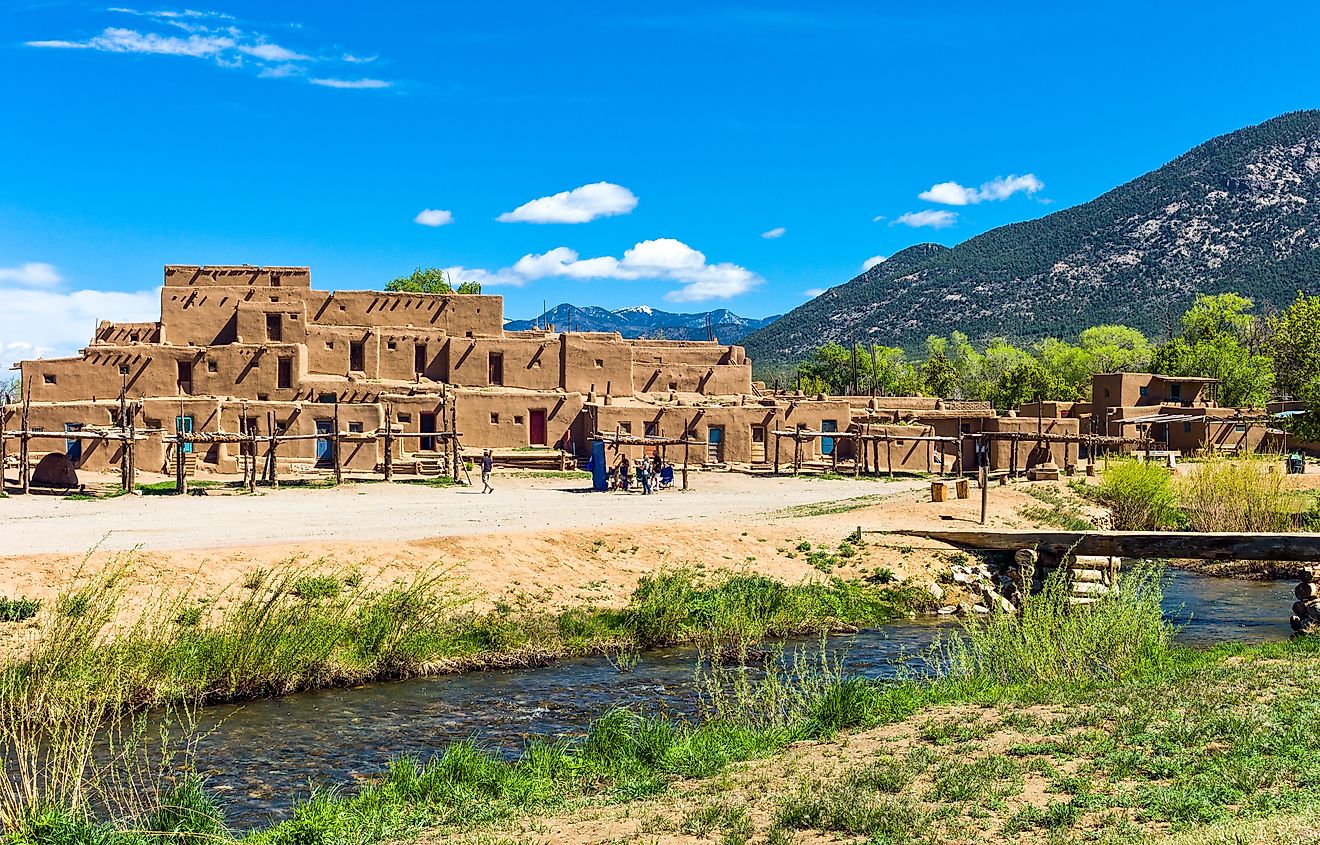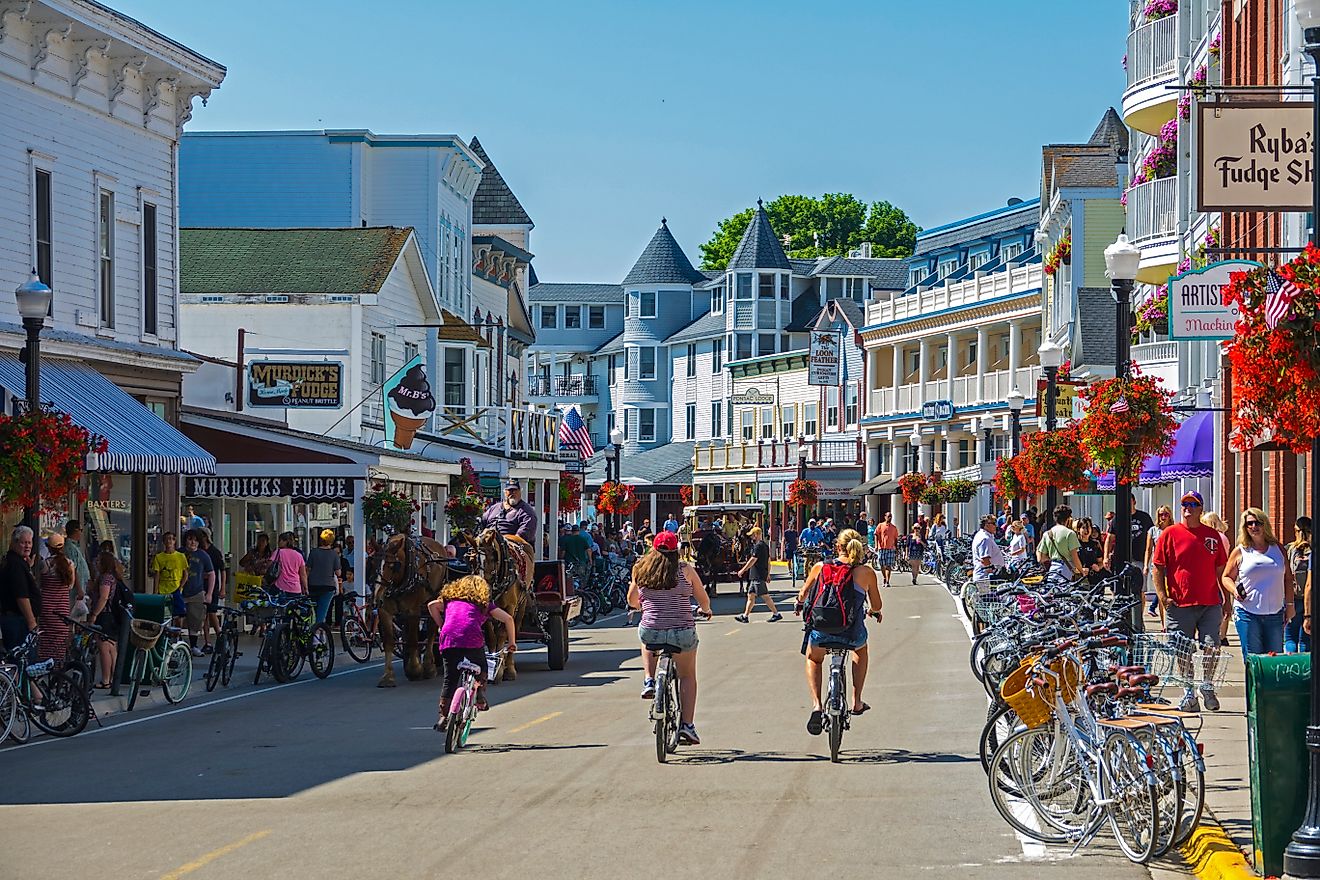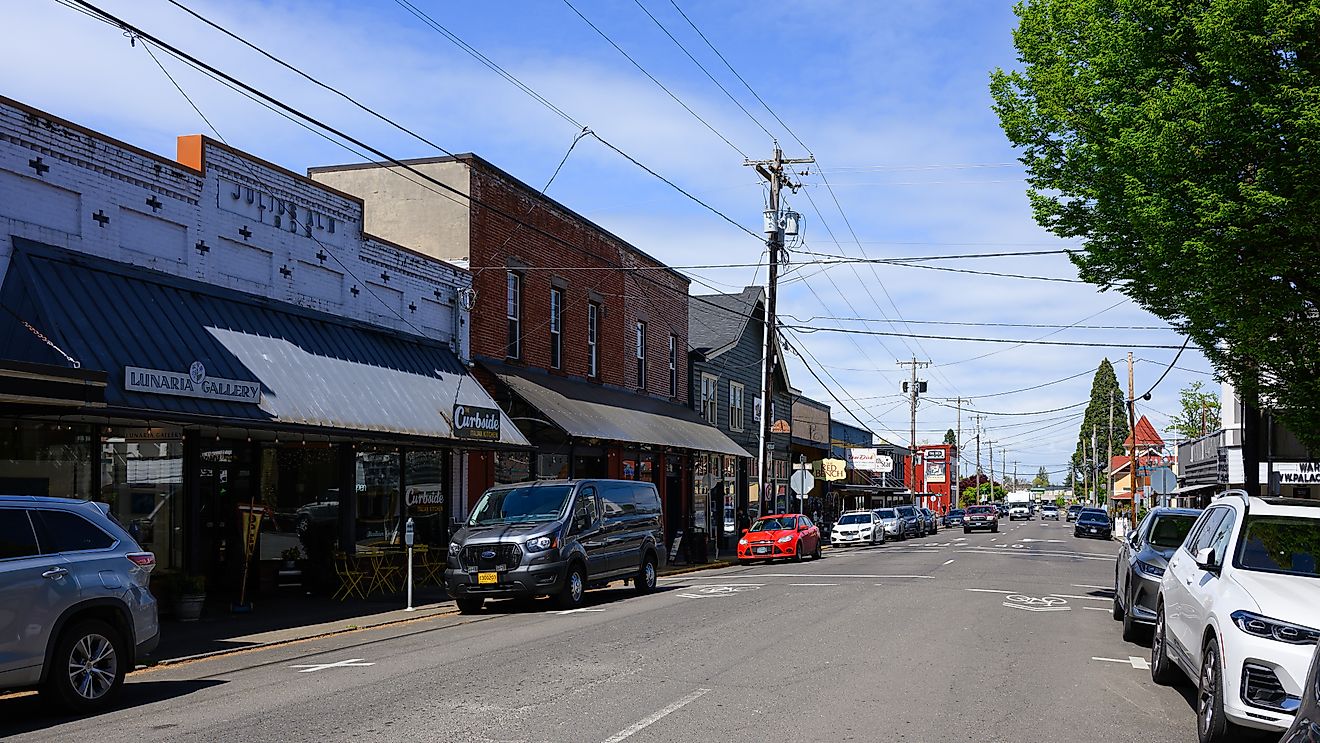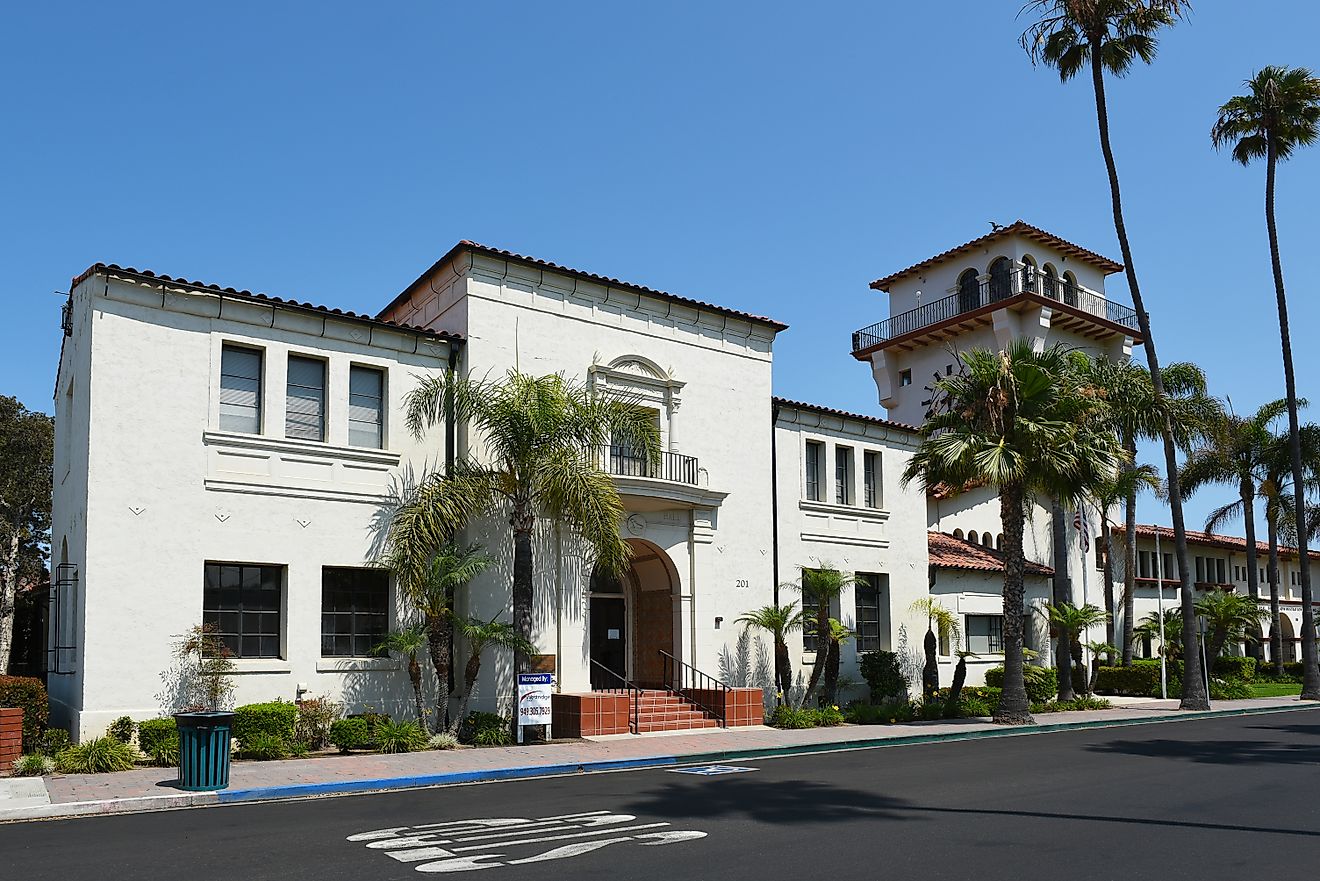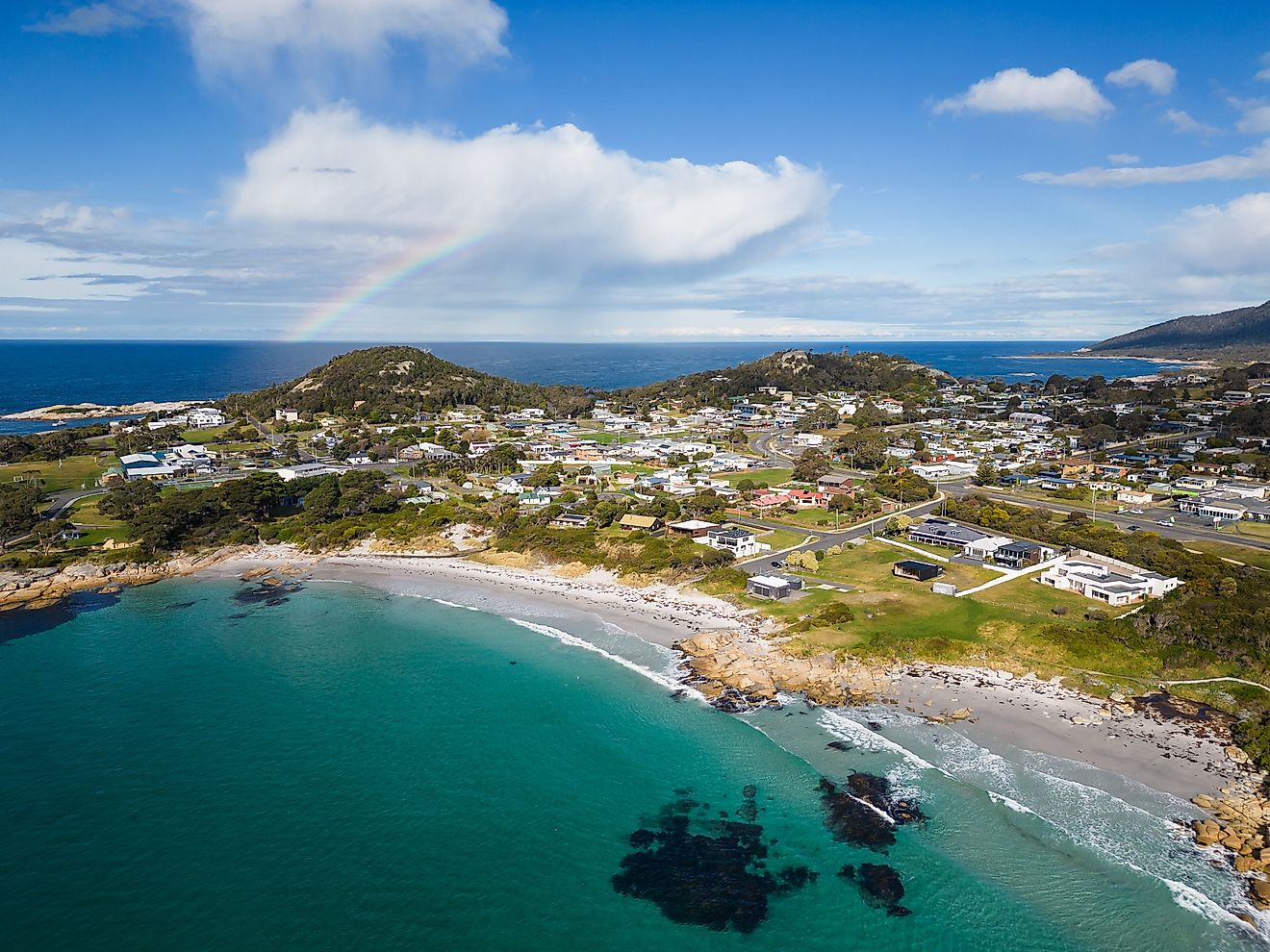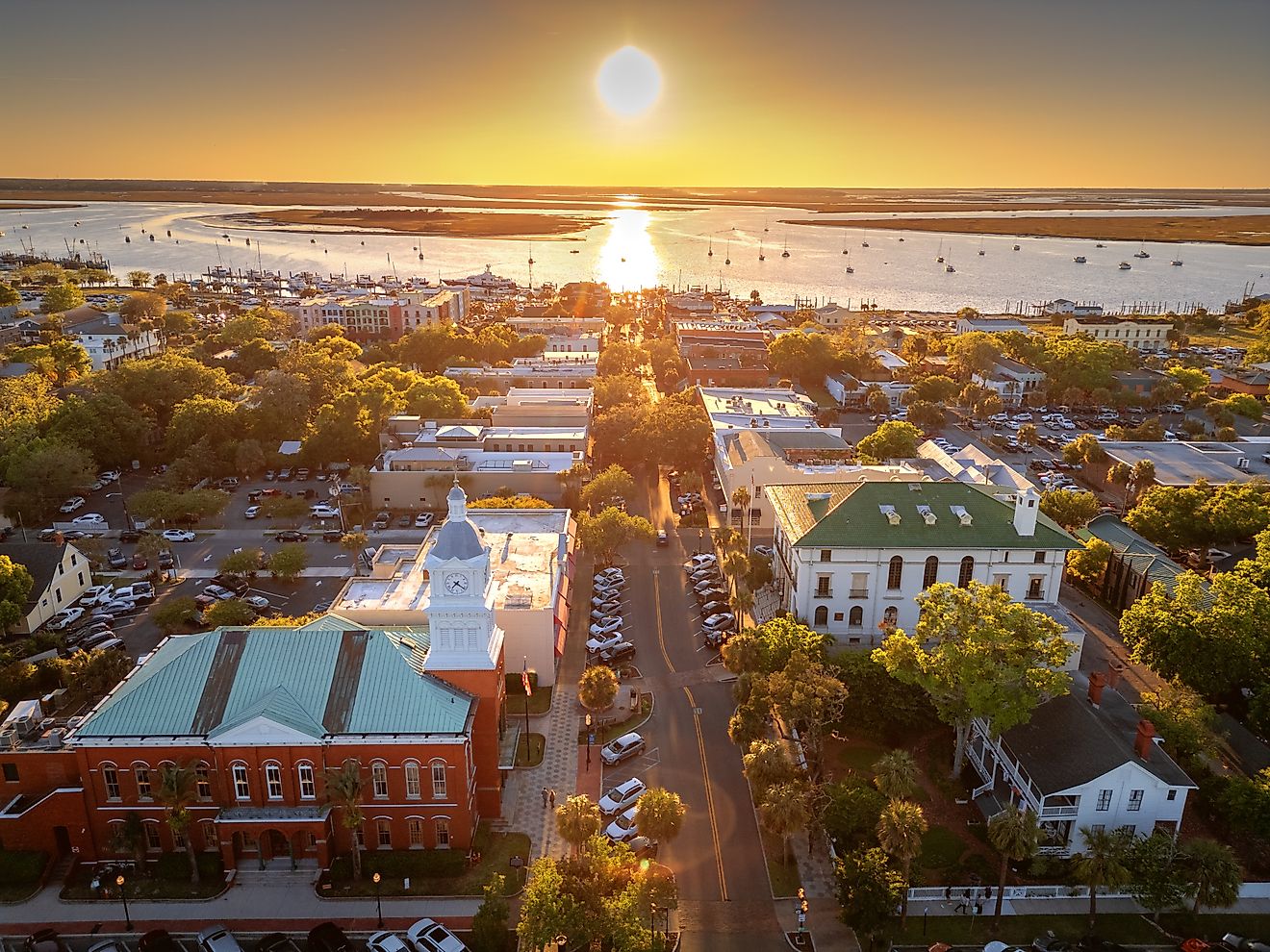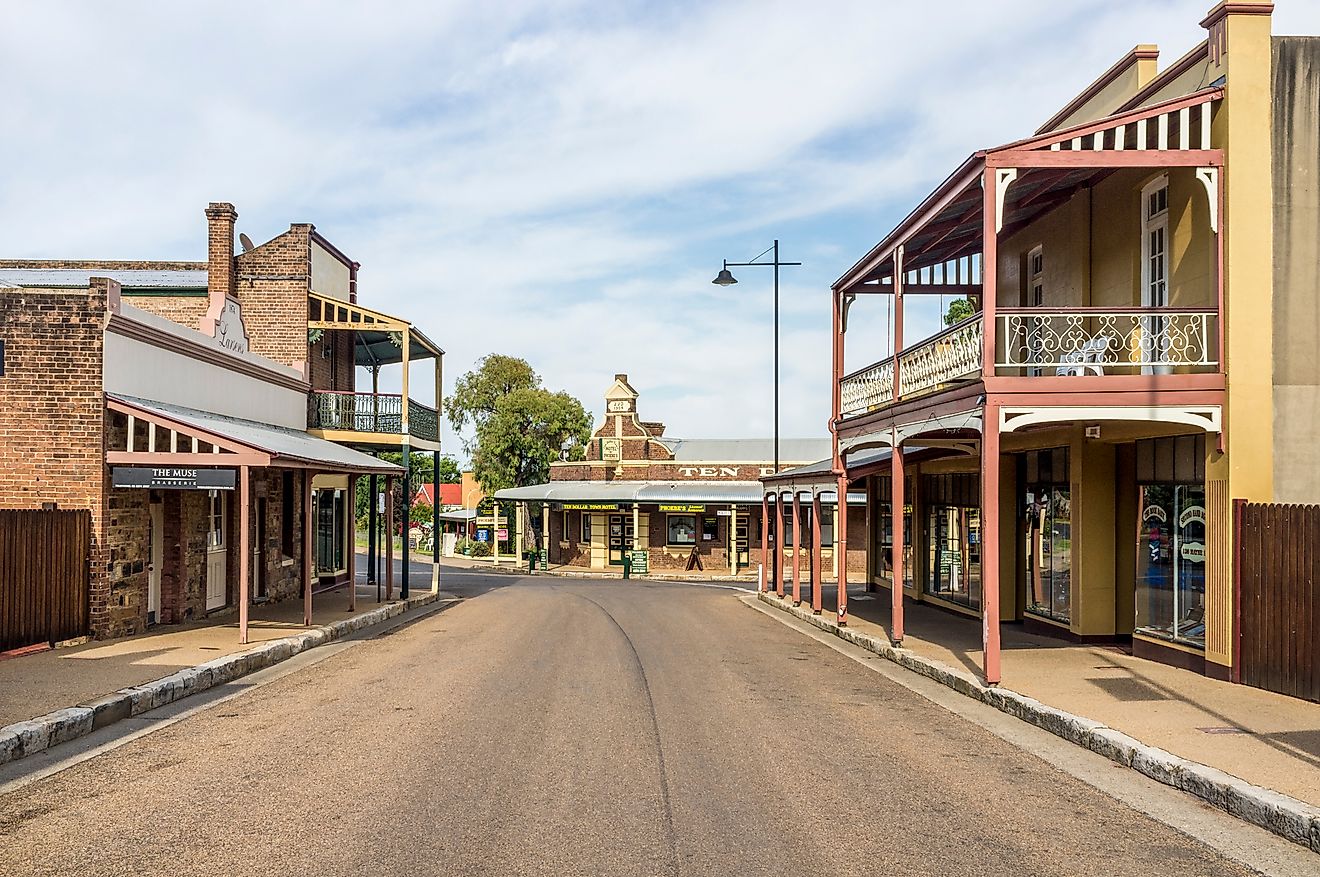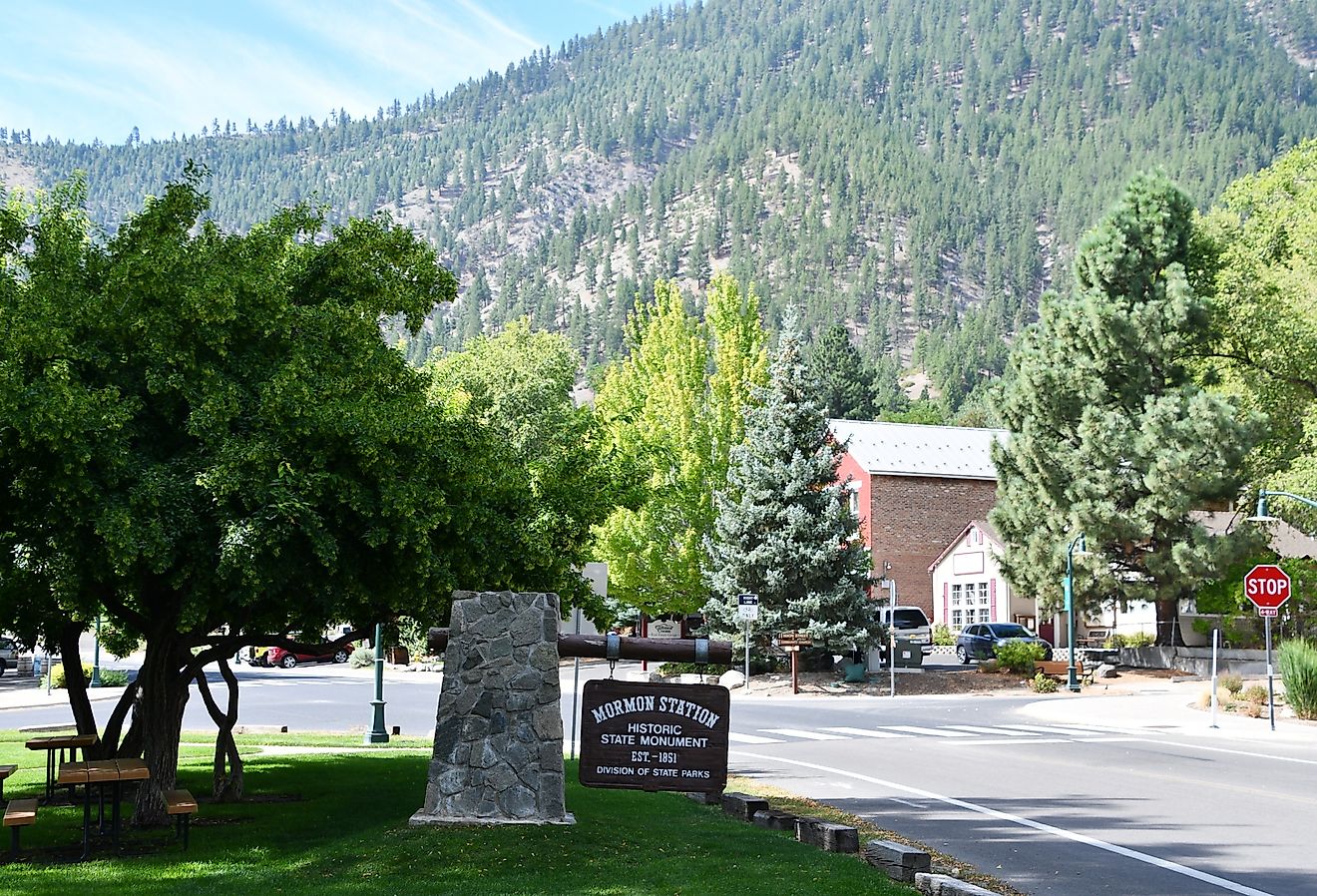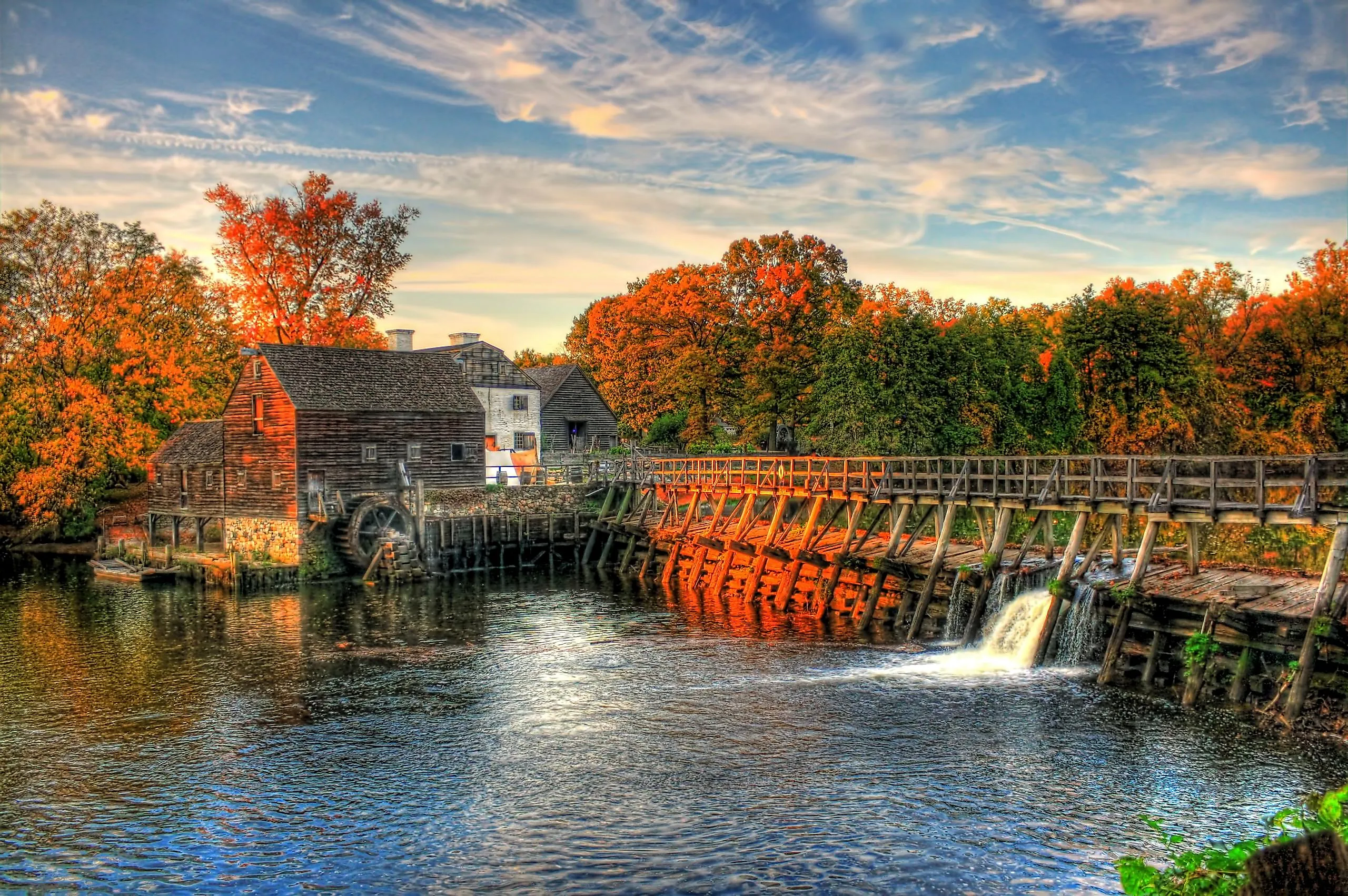
9 Bucket-List Small Towns In New York
New York State reigns supreme across the Mid-Atlantic, reaching from Niagara Falls in its northwest corner to New York City, holding firm in the southeast. Beyond the busy routes cutting through metropolises and universally renowned natural wonders, plenty of idyllic small towns dot the verdant countryside, each holding its own appeal. Some carry tales of headless riders and phantom legends, while others recall Dutch pilgrim settlements from four centuries ago that planted roots along river valleys and fertile plains. Mountain hamlets in the Adirondack range give way to villages along the Finger Lakes, and coastal communities line the Atlantic shoreline where lighthouses have guided mariners for generations. These Empire State small towns stack up your bucket list so quickly that you may need to rework your entire itinerary just to fit them all in.
Cape Vincent
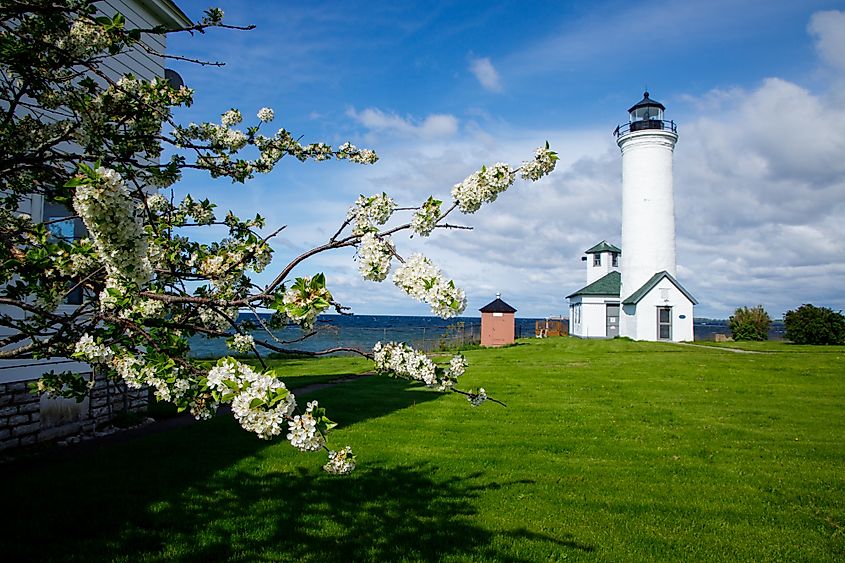
At Jefferson County's northern corner, Cape Vincent witnesses Lake Ontario converging with the St. Lawrence River across ancestral Onondaga lands. The Cape Vincent Fisheries Station operates at this remarkable junction, conducting ongoing research and conservation initiatives focused on fish populations and water quality. This sets this waterfront community as an essential backdrop for Great Lakes ecosystem studies, as well as for your bucket list. Nearly three millennia ago, Woodland Period civilizations thrived in this region, depositing evidence of human activity centuries before European arrivals inscribed fresh narratives into this northern zone.
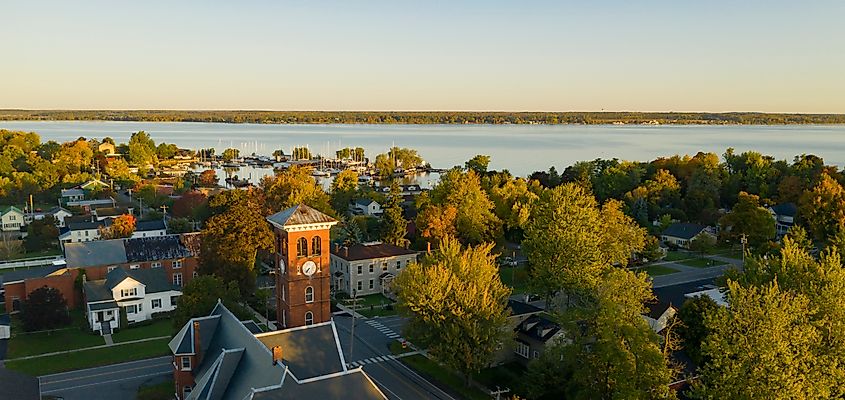
Water courses in every direction from this compelling northern apex as the massive lake extends toward distant horizons, its surface changing from light azure to midnight navy, depending on atmospheric conditions and time of year. Multiple beacons mark the coastline, including Cape Vincent Breakwater Lighthouse guarding the harbor entrance and Tibbetts Point Lighthouse commanding an elevated location. The Cape Vincent Historical Museum safeguards artifacts and narratives from the area's earlier eras. Verdant slopes descend from the waterfront toward the south, where agricultural lands and vineyards profit from the prolonged cultivation period this northern latitude affords. For lodging, the Roxy Cape Vincent furnishes luxurious accommodations for travelers exploring this lakeside destination.
Canandaigua
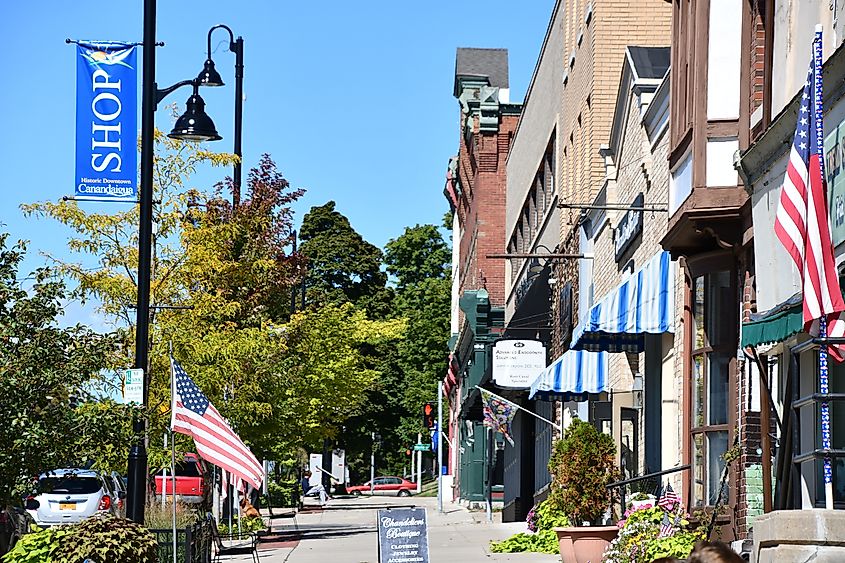
Canandaigua anchors the northern tip of its namesake Finger Lake, positioning itself as a bucket-list destination for travelers seeking authentic wine country experiences along waterfront recreation. Wine production is the backbone of the local economy, supported by the region's humid climate and traditional viticulture practices that define the area. Canandaigua Lake State Marine Park offers outdoor activities through boat ramps that provide direct access to the water. The Canandaigua Lady, a double-decker paddlewheel steamboat echoing 19th-century design, carries passengers on lake excursions that favor working mechanics.
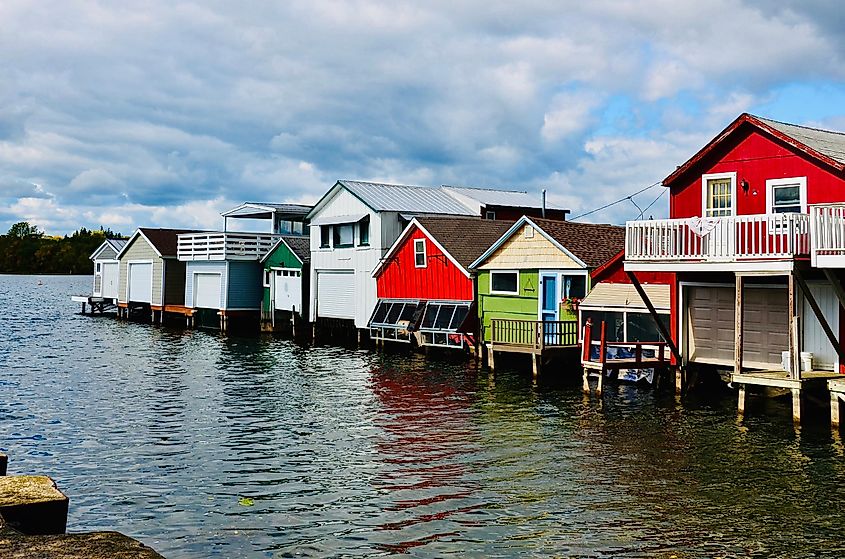
Community gatherings fill the social calendar, bringing tractor pulls and mechanical exhibits near Roseland Waterpark. The Constellation Brands-Marvin Sands Performing Arts Center stages outdoor concerts, frequently hosting the Rochester Philharmonic Orchestra during warmer months. Sonnenberg Gardens and Mansion State Historic Park features Victorian-era grounds from the 1880s, where botanical gardens bloom throughout the summer and fall seasons. Colonial Revival structures, such as Granger Cottage, punctuate the area, each contributing fragments from different periods of New York's architectural timeline.
Marcellus
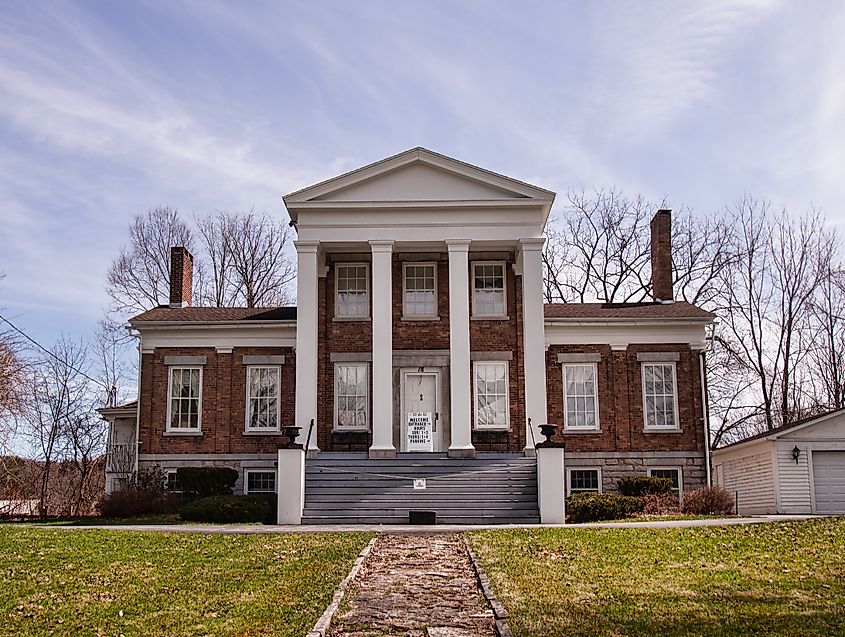
Marcellus makes its mark on the eastern side of the Finger Lakes, about five miles from Otisco and Skaneateles Lakes. Nine Mile Creek, a tributary of the Oswego River, connects the lakes to the larger Lake Ontario Basin as it flows through the hilly landscape of upstate New York's underrated towns. As you drive along Rose Hill Road, the exquisite lakeside scenery gradually changes from open fields to prominent spots, like the Baltimore Woods Nature Center. Here, visitors enjoy picnics and hiking, and may even participate in plant sales and outdoor classes on environmental awareness. Nearby, Sycamore Hill Gardens showcases the area's commitment to green space, flaunting hedged mazes, small ponds, intricate stonework, and an eclectic spectrum of plants from Asia and Europe that evoke a sense of wonder.
In Marcellus, history is embodied in sites like the Greek Revival-style home, Tefft-Steadman House, dating back nearly 200 years and now serving as a museum. Not far from there, the Dan Bradley House's Federal-style facade is another relic of the town's early years. Life here moves at a slower pace, and swinging your clubs at Sunset Ridge Golf Club's quiet course along rolling hills may resonate with you like it does with the residents. North of town, Nine Mile Creek near Marcellus Falls attracts anglers, especially in summer, with a variety of trout.
Webb
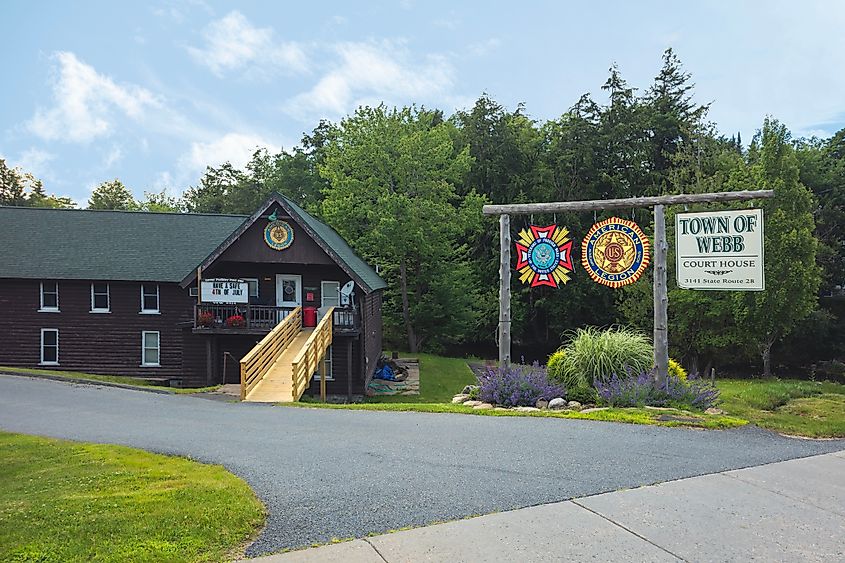
New York’s largest town by area, Webb climbs into the upper reaches of the Adirondack Mountains range, where long winters and low valleys produce colder readings than anywhere else in the state. Each of its hamlets moves at a varied pace, though it's Old Forge that is the most eminent among these communities, thanks to its weather-beaten signs, timber-lined shops, and snowmobiles parked alongside boot tracks in the snow. At Thendara Station, the Adirondack Railroad runs its frigid-season line across the Moose River, passing derelict stops that say more about upstate New York than any brochure ever could.

Annual gatherings in Webb lean toward the elemental, with February’s Winter Carnival drawing out sled runs, bonfires, pond hockey, and hand-warmed cider under the crystaline seclusion of deep winter. Trails also angle up toward Bottle Mountain, where altitude and wind shear the treeline down to bare stone and frost-hardened shrubs. Beyond that, the forest doesn't end so much as cascade beyond view, ridge after ridge trailing off with faint blazes and sagging markers half-swallowed by lichen and bark.
Lockport
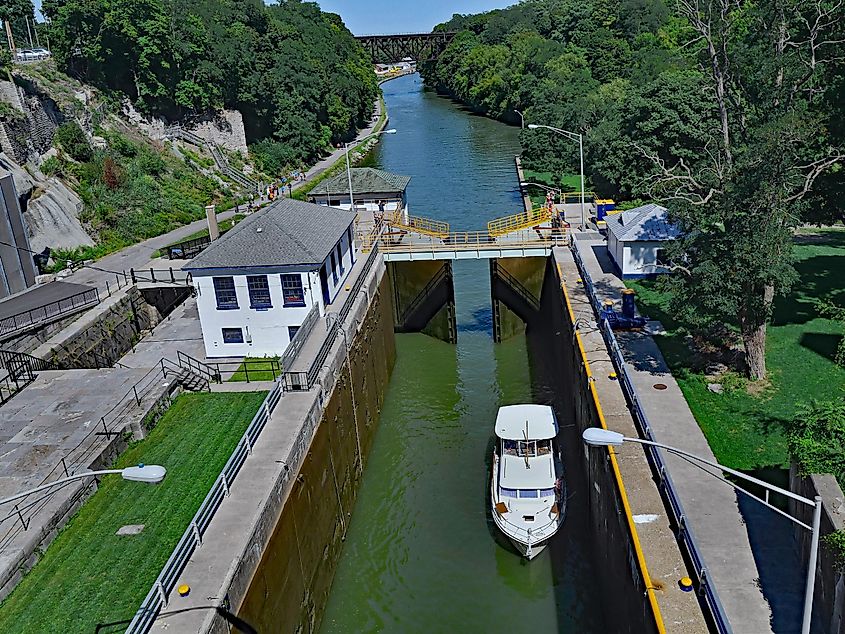
Just a short drive from Canada’s Ontario border, the town of Lockport invites you to cross off a major item on your bucket list. With all the eminent lakes and waterfalls around Buffalo and Niagara Falls, it makes an ideal stop for countryside beauty and riverside adventures. You’ll find all the locks of the Erie Canal climbing the Niagara Escarpment here, right beside modern canal traffic. The Erie Canal Discovery Center's interactive spin familiarizes you with local history, while the outer engineering feats of the historic "Flight of Five" locks remain nothing short of mesmerizing. Walking along the grounds of Union Station in the historic district yields opportunities to pause at the rail fencing and soak in its landmark status, even when the building itself is no longer accessible.
With dozens of parks, such as Outwater Memorial Park, spaced at short intervals, outdoor options abound in Lockport. East of town, Spring Lake Winery & Ristorante lets visitors dine amid vine‑lined settings, while to the west, Arrowhead Spring Vineyards welcomes guests for tastings and tours. Come December, Winterfest animates the Kenan Center campus, while in November, the biennial Kenan Quilt Show fills that arena with handcrafted works by regional quilters.
Amsterdam
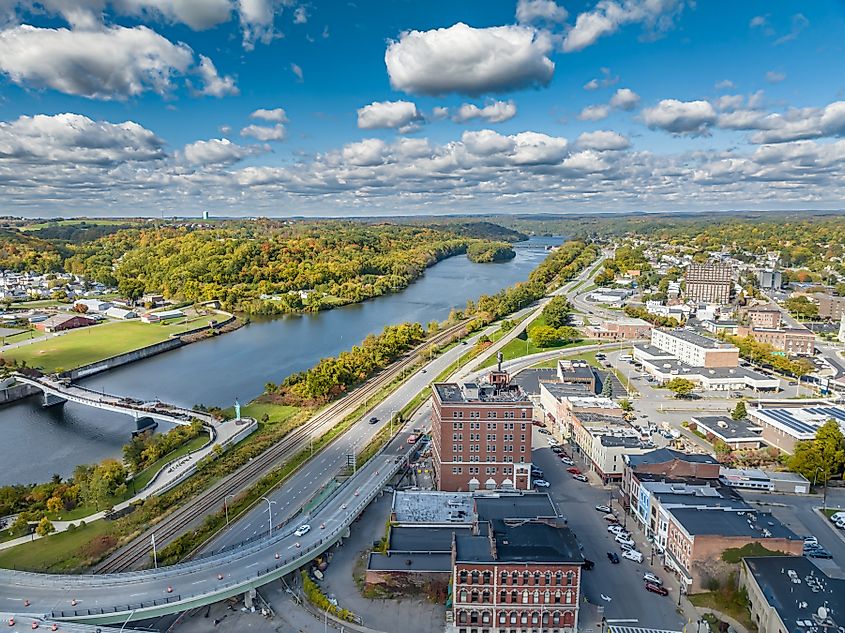
The Dutch capital lends its name to New York's Amsterdam from across the Atlantic, evoking the earliest European settlement traditions that began when New York was part of New Netherland. At that time, Mohawk tribes controlled this expanse of valley and traded furs with Dutch merchants who steered rivers that would later determine the region's development. The Mohawk River divides the city into roughly two halves, with downtown Amsterdam anchoring the north bank while the Port Jackson neighborhood claims the southern side. The grandeur of the Sanford Clock Tower, a six-story brick structure built in 1922 for the carpet company that once powered the city's economy, pierces the skyline and now provides space for artists, small firms, and event venues.
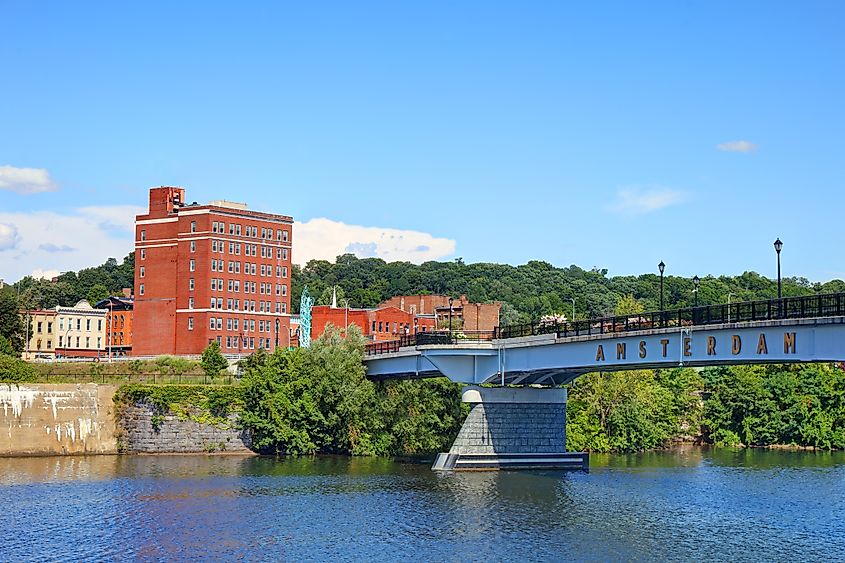
The Mohawk Valley Gateway Overlook, a curved pedestrian bridge completed in 2016, glides 511 feet across the Mohawk and connects downtown to Riverlink Park through interpretive panels that trace the valley's layered history from Native settlements to modern renewal. Lock E11 spans the river with a truss structure carrying multiple steel gates that open and close with electric winches to dam the water or let it flow freely. The armory at 49 Florida Avenue now operates as Amsterdam Castle, a bed and breakfast where travelers sleep in rooms ornamented with antiques, paintings, and suits of armor. The Amsterdam Free Library, built in 1903 with Carnegie funds, continues serving the public on Church Street, maintaining its Beaux-Arts facade and preserving local records that visitors consult while exploring a city they cross off their bucket list.
Montauk
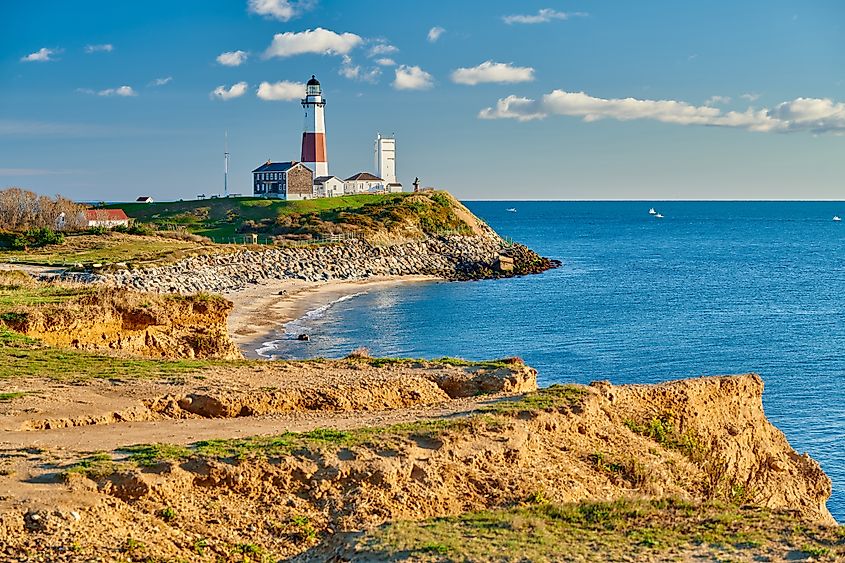
Montauk tops the bucket lists of thousands of New Yorkers who drive roughly 120 miles east to the Atlantic Coast, seeking the quiet allure of this coastal town far removed from the crowded chaos of urban districts. At the edge of Long Island, where the ocean stretches endlessly, this delightful hamlet enchants tourists with crisp salt air and wide horizons. Its appeal springs from a balanced mix of adventure and calm, whether relaxing by the Ditch Plains Beach or flaunting their wave-riding skills on some of the East Coast’s most reliable breaks.
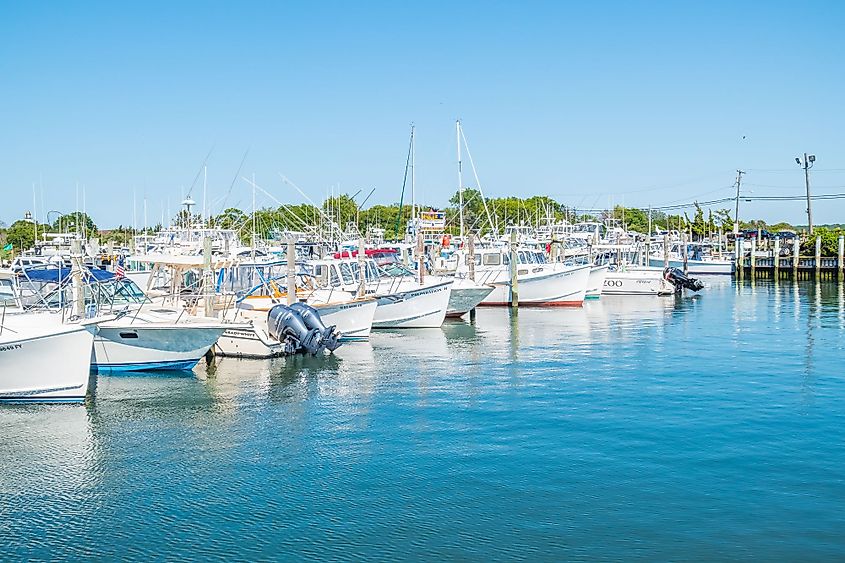
Hither Hills State Park spills over coastal dunes and maritime forests, its trails meandering through everything from beach grass to shadowy woodlands. In the heart of town, the Montauk Point Lighthouse Museum beckons visitors to scale its 110-foot tower. From the top, panoramic vistas offer stunning glimpses of Block Island Sound and the boundless Atlantic. The museum details Long Island’s maritime history, while the lighthouse beacon has endured its centuries-old task with a restored Fresnel lens, having witnessed numerous shipwrecks.
Plattsburgh
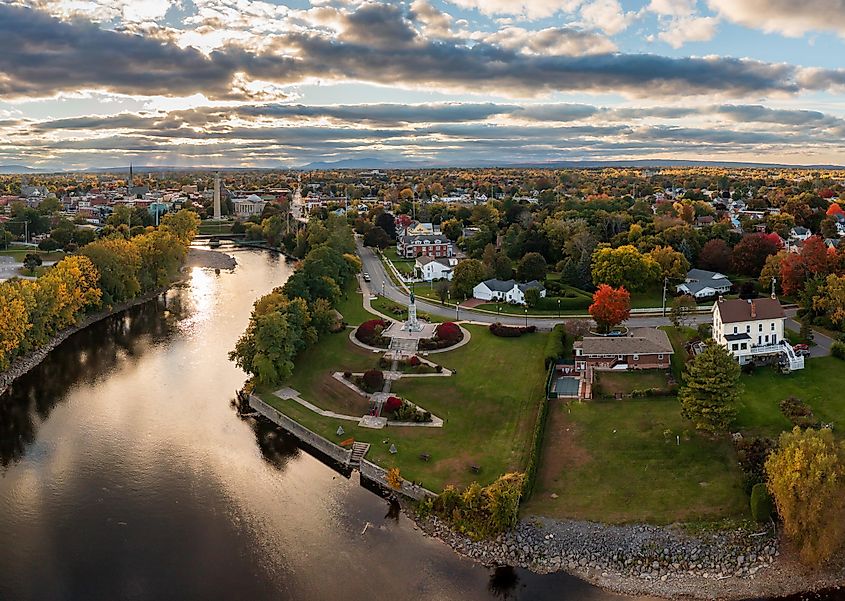
A different side of New York emerges in Plattsburgh, one that mirrors Vermont's green slopes and Quebec's French-inflected culture more than Manhattan's towers. The peninsula at Cumberland Head juts into Lake Champlain, where Cumberland Bay State Park stretches along the shoreline, offering swimming beaches and forested trails that lead to stunning views of the waters. Not far from Adirondack Park, mountainous vistas roll across the horizon, yet the charming city distinguishes itself through its preservation of centuries of conflict and culture. The Plattsburgh State Art Museum rotates contemporary works alongside the bold prints of Rockwell Kent and regional folk art.
The War of 1812 Museum immortalizes the site of the amphibious Battle of Plattsburgh, and its repository displays naval weaponry, vintage uniforms, and scale models of the historic fleet engagement. The Kent-Delord House Museum, housed in a 1797 mansion, remains intact, its artifacts including original heirlooms, period furniture, and hand-painted wallpaper that survived British occupation. Not far away, the Saranac River dissolves into the great lake as MacDonough Monument pierces the skyline. It still recounts Commodore Thomas MacDonough's naval victory, which turned the tide of the northern campaign and secured American independence from further British incursion.
Sleepy Hollow
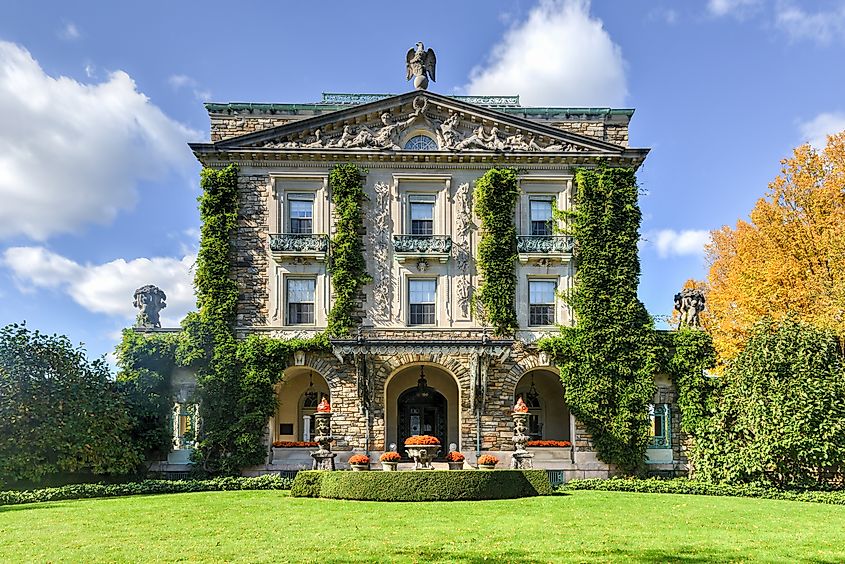
The paramount reason Sleepy Hollow gets a place on most travelers' bucket lists springs from Washington Irving's classical Gothic tale of a headless horseman terrorizing the village. This outlandish legend, which the author conjured upon visiting the area, ranks among America's earliest ghost stories and continues to animate the namesake town's allure. Dutch farmers settled in the Hudson River valley region in the 1600s. In 1685, Frederick Philipse constructed a mill, manor house, and church along the Pocantico River that anchored the agrarian community. The Old Dutch Church, recognized as a National Historic Landmark, gathers visitors who wander its colonial graveyard.
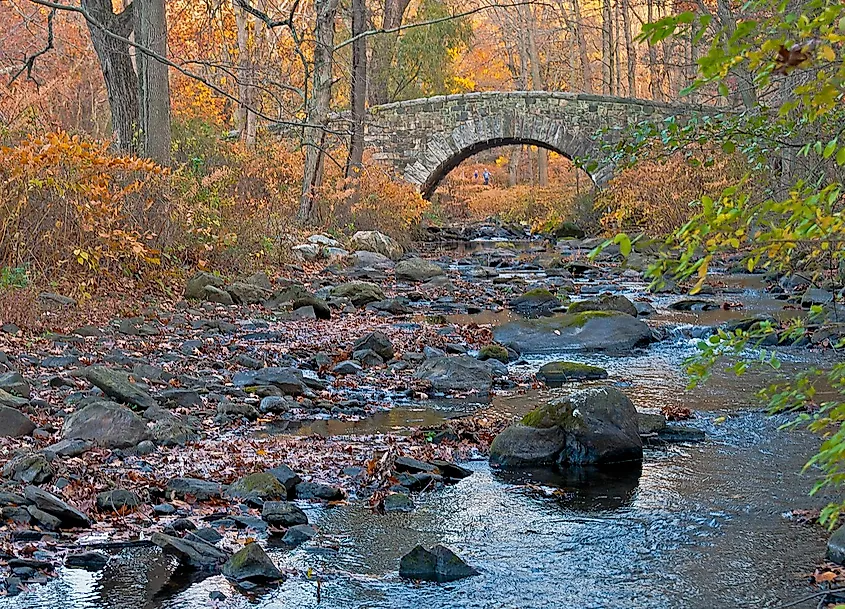
The Philipsburg Manor House, another National Historic Landmark, displays 18th-century farm operations complete with water-powered gristmill demonstrations and costumed interpreters who recount daily colonial routines. Sleepy Hollow Cemetery sprawls across rolling hills where Andrew Carnegie, William Rockefeller, and other industrial magnates claim eternal plots beneath elaborate monuments. Kingsland Point Park edges the Hudson with a narrow strip of land between rail lines and river, facing the stone flank of the Palisades rising bluntly across the channel. Just northeast, Rockefeller State Park Preserve threads 55 miles of carriage roads through woodlands and meadows once belonging to the Rockefeller estate.
Exploring New York Through a Bucket List That Writes Itself
New York's small towns offer experiences that rival the state's headline attractions, with each boasting advantages that reserve their status as must-see destinations. Small cities, hamlets, and villages rise along glacier-carved lakes where sailboats drift past limestone bluffs, or they settle into hillsides where vineyards drop toward shimmering water. Sleepy Hollow invites visitors to walk through gothic legend and Revolutionary ghosts, while Webb stays frostbitten and plainspoken, built for those who don't need signs to know where they are. Montauk pulls surfers to Atlantic swells in an idyllic coastal refuge, and Plattsburgh opens Lake Champlain vistas just miles from the Adirondack interior. Near Buffalo and Niagara Falls, Lockport flaunts Erie Canal engineering that once transformed commerce across the Empire State. Whether you chase mountain solitude, waterfront calm, or historic intrigue, these towns tighten your schedule with stops that belong on any bucket list.

